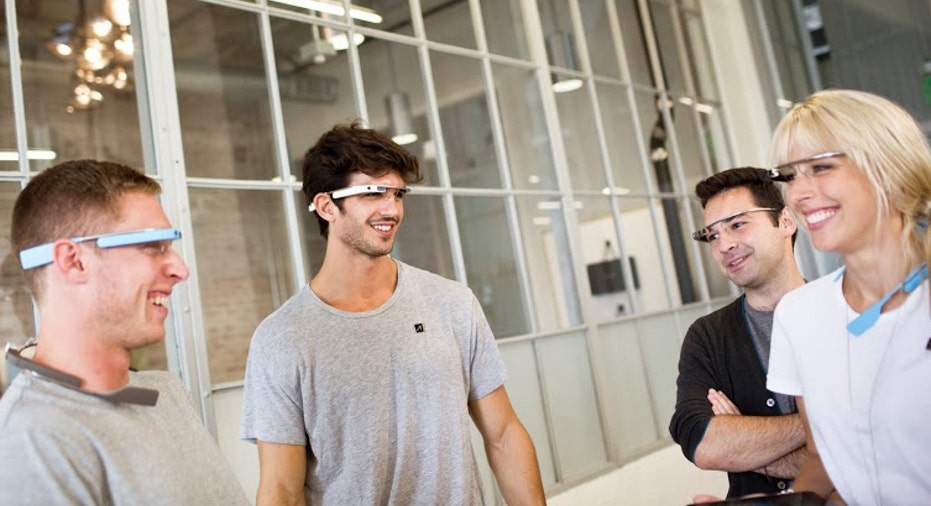Tech to Blur Lines Between 'Real' and Digital Friends

Imagine being able to walk into a room donning Google Glass when all of a sudden a digital rap sheet of the people around you appears before your eyes.
Roger is a friend of a friend, Sally is the CEO of a hot new startup, and Dan, sitting over there in the corner, is the buddy from high school you came to meet.
This is the vision of SocialRadar, the newly-launched iOS app, "very soon"-to-be launching on Google (NASDAQ:GOOG) Glass and later Android, that is hoping to mesh the digital and real worlds.
By taking advantage of the oodles of information people post to the cloud, and cross-referencing that with location data (there are more than five million Foursquare check-ins daily), the app is hoping to provide users with relevant real-time data about the people in their vicinity -- but not in a creepy way.
“We think in some ways social media has made people a little more impersonal,” said Michael Chasen, the app’s chief executive. “But imagine if you could take all that info online and apply it to real world conversations.”
The goal, in a sense, is to gradually take social media offline. Not completely, of course, but to encourage people to foster physical interactions through easily-accessible online data.
“Google Glass, regardless of whether it ends up being a success or not, is another example of consumers being more always-on than ever before,” said Erich Joachimsthaler, CEO of brand strategy firm Vivaldi Partners.
“The number of consumers who [go] online multiple times a day through various devices has nearly doubled in the past four years and this trend will only continue,” he said.
SocialRadar – one such location-based app expected to be available with the public launch of Google Glass – is designed to work naturally with wearables.
For example, down the road, as people share more information, the app might be able to tell you that Sally standing across the bar isn't just a CEO but recently scored another round of funding. She even bought a poodle, and as you can see from her Instagram, she loves dressing him in sweaters. Cue the introduction -- apps like these are blurring the digital divide.
People are already using sites like Tinder to meet and date people, are becoming more socially comfortable with physically meeting digital connections from, say, Twitter (NASDASQ:TWTR), and are even taking to sites like Nomaders.com that enable travelers to connect with locals to get an immersive experience. It's totally normal now to rent a bedroom, or whole house, to a stranger for cash through sites like Airbnb, or to get in a stranger's car through apps like Lyft, Uber or Sidecar.
It’s an immersive digital experience, and it is becoming more readily available and acceptable as cloud technologies improve and Big Data experts find savvy ways of gathering and utilizing data – from targeted marketing to scheduling group meets with strangers.
“Smartphones, in a sense, are location beacons – all these people are sharing data,” Chasen said. “This technology has the chance to fundamentally connect more -- take all the information you have online and pull it up when it is relevant.”
Of course, privacy and safety concerns remain a major roadblock. People like their secrecy, not everyone wants their information to be easily scooped up by everyone else in the room, and not everyone is comfortable with meeting or talking to strangers.
However, like SocialRadar, which has a high degree of security and allows people to choose from a number of settings (anonymous and invisible to completely public), similar apps and devices coming up the pipeline will likely offer personalized privacy settings to give users a greater sense of control.
That’s at least until people become comfortable and reliant enough on their devices that multi-layered security becomes irrelevant.
Much farther down the road, humans could become so dependent on technology, wearables so conformed to the human body, that location-based technology becomes the users' eyes and ears -- an essential personal assistant.
“What we’re finding is once people start using SocialRadar, they get really comfortable with it,” Chasen said, noting that more than half of the accounts on the app right now are set to “public.”
“I have some 2,000 friends on social media and eight in real life,” Chasen joked. “There’s a disconnect there.”